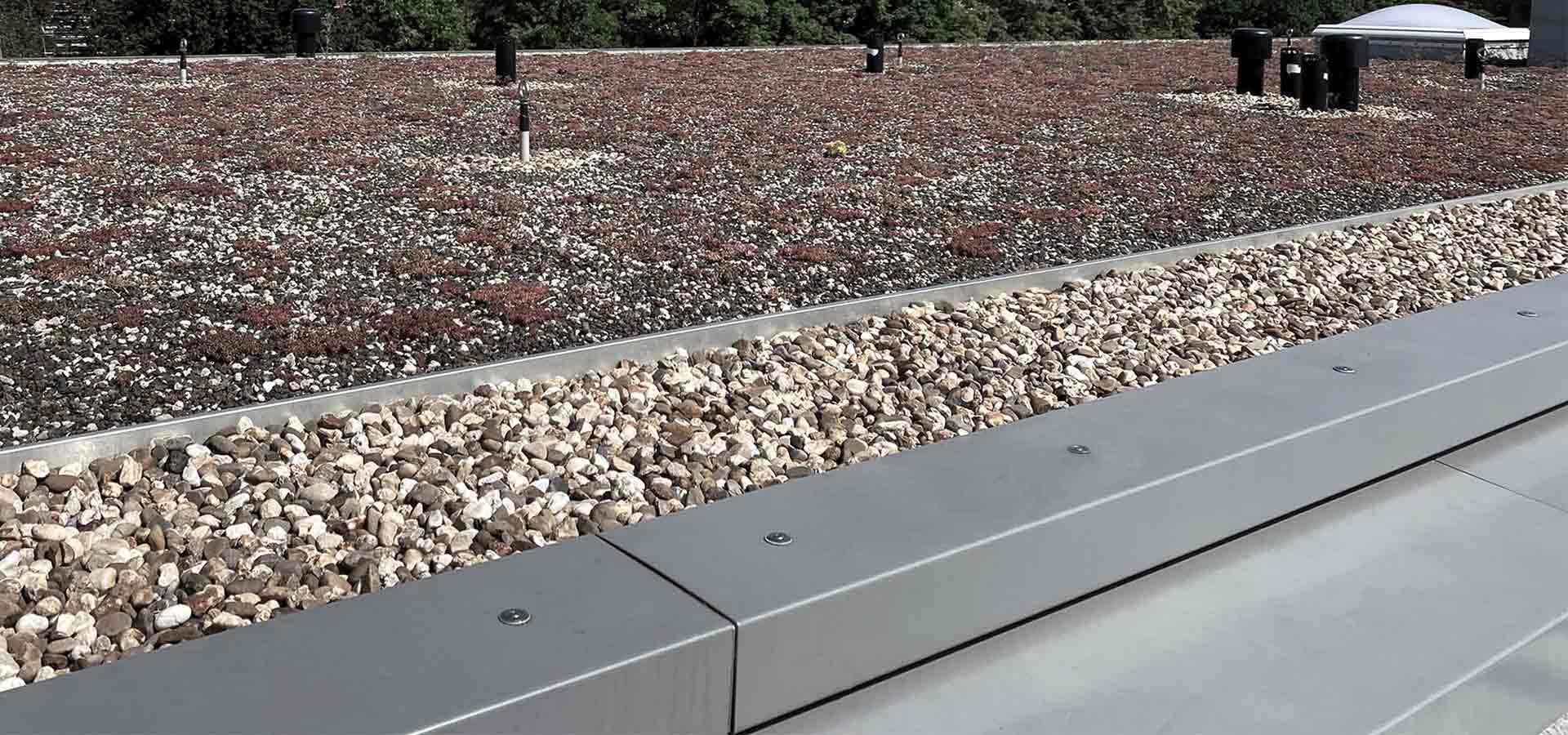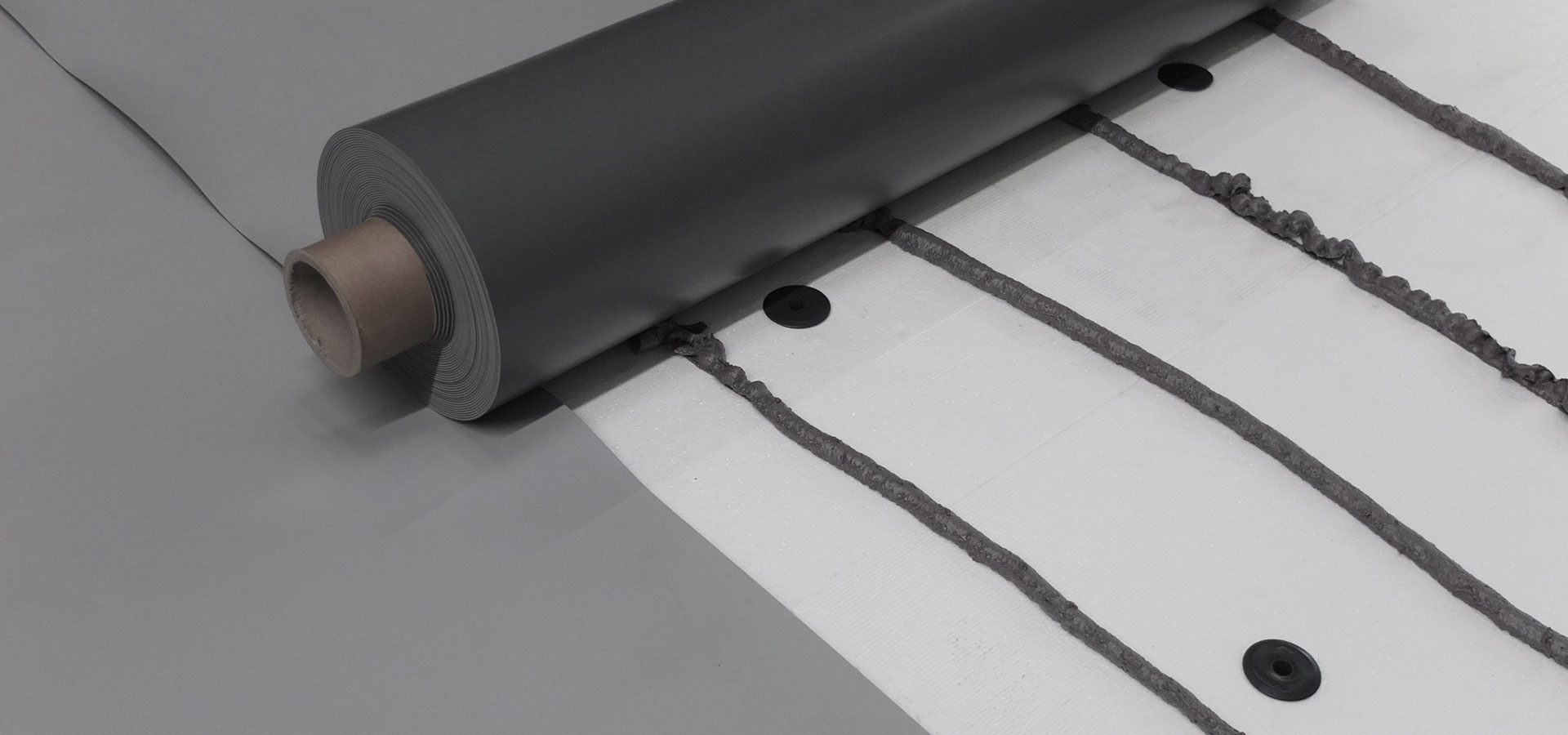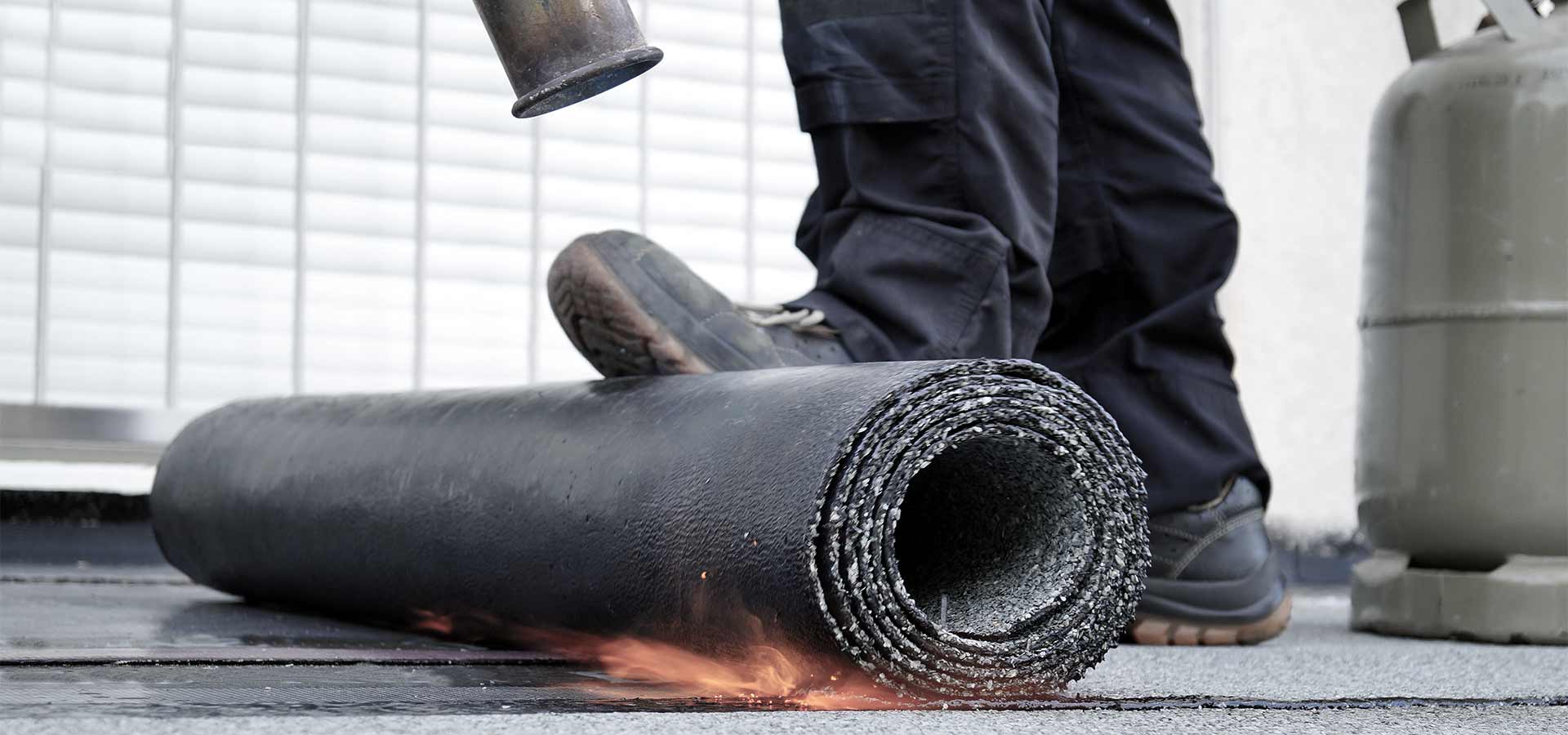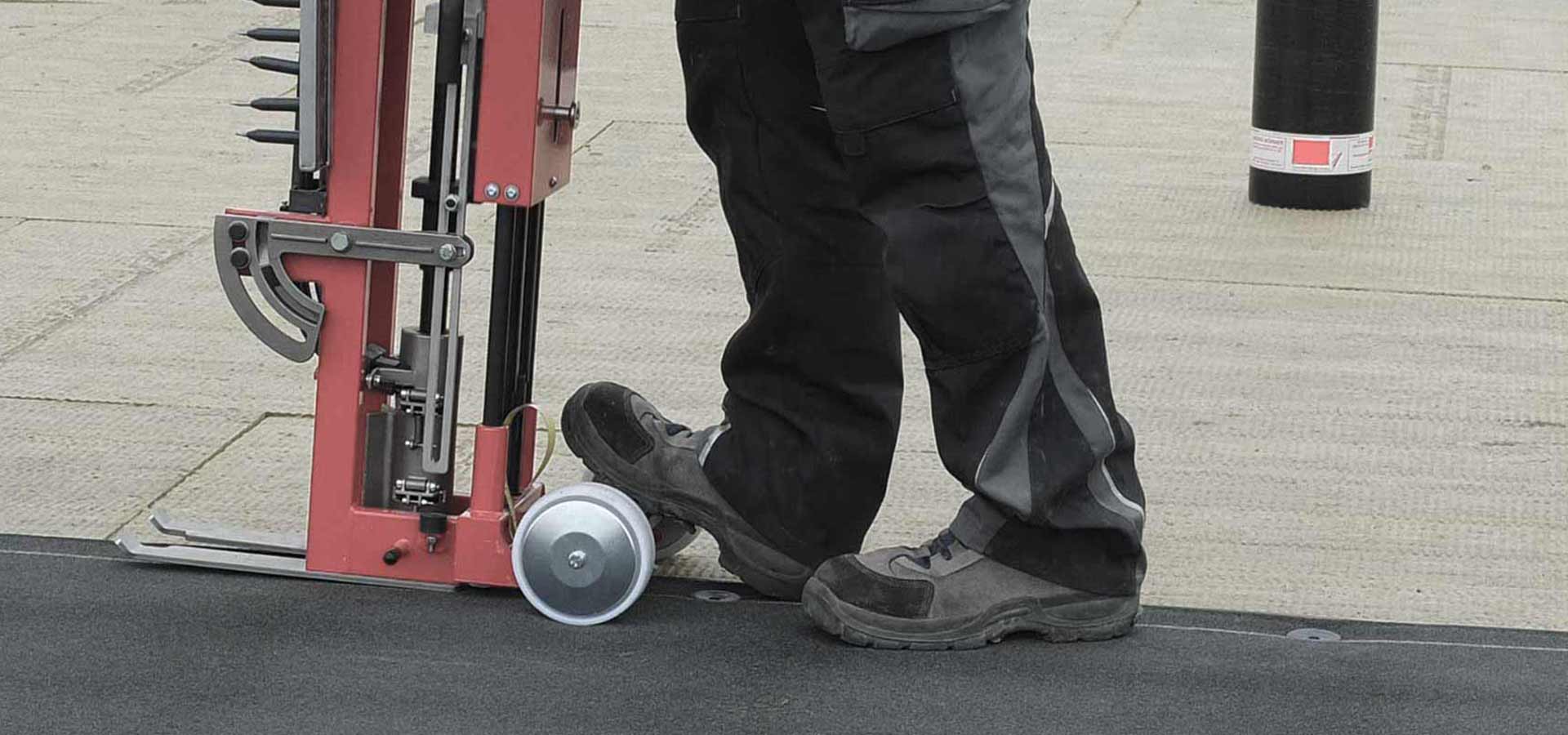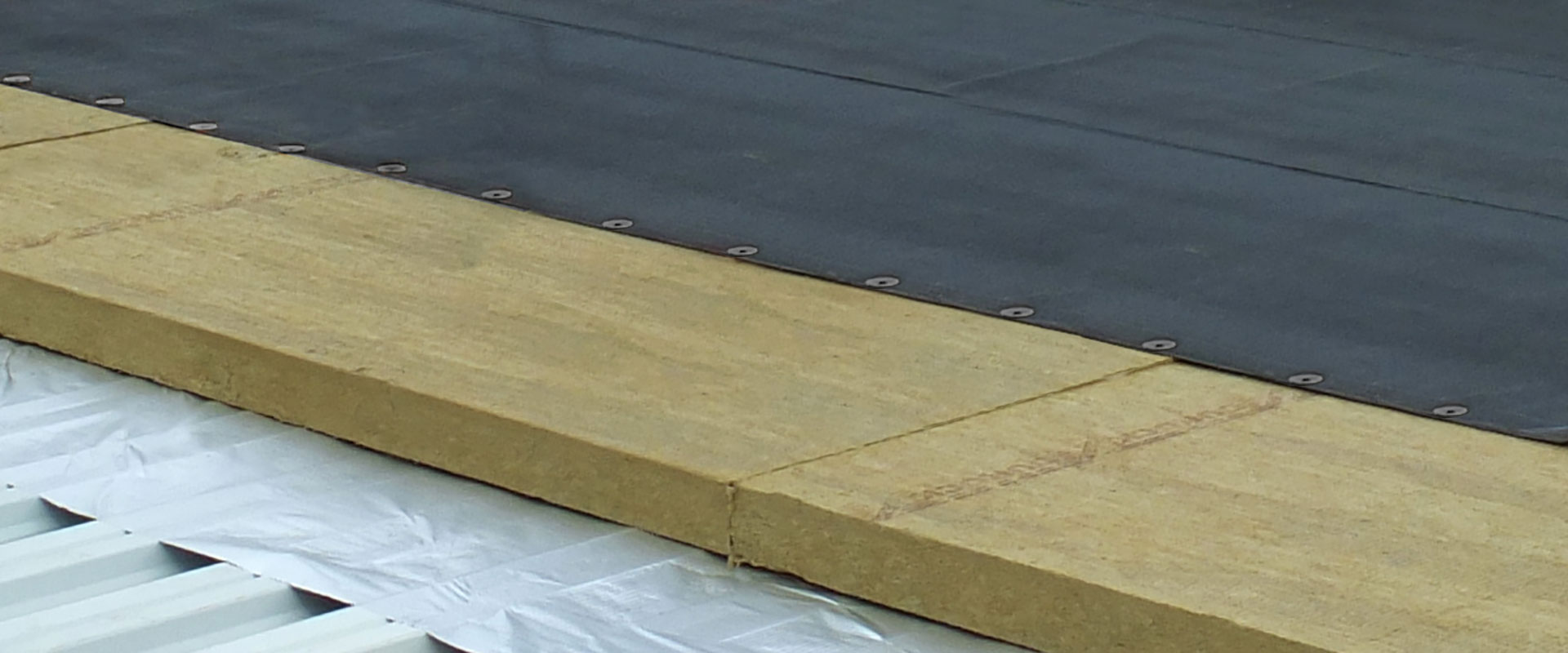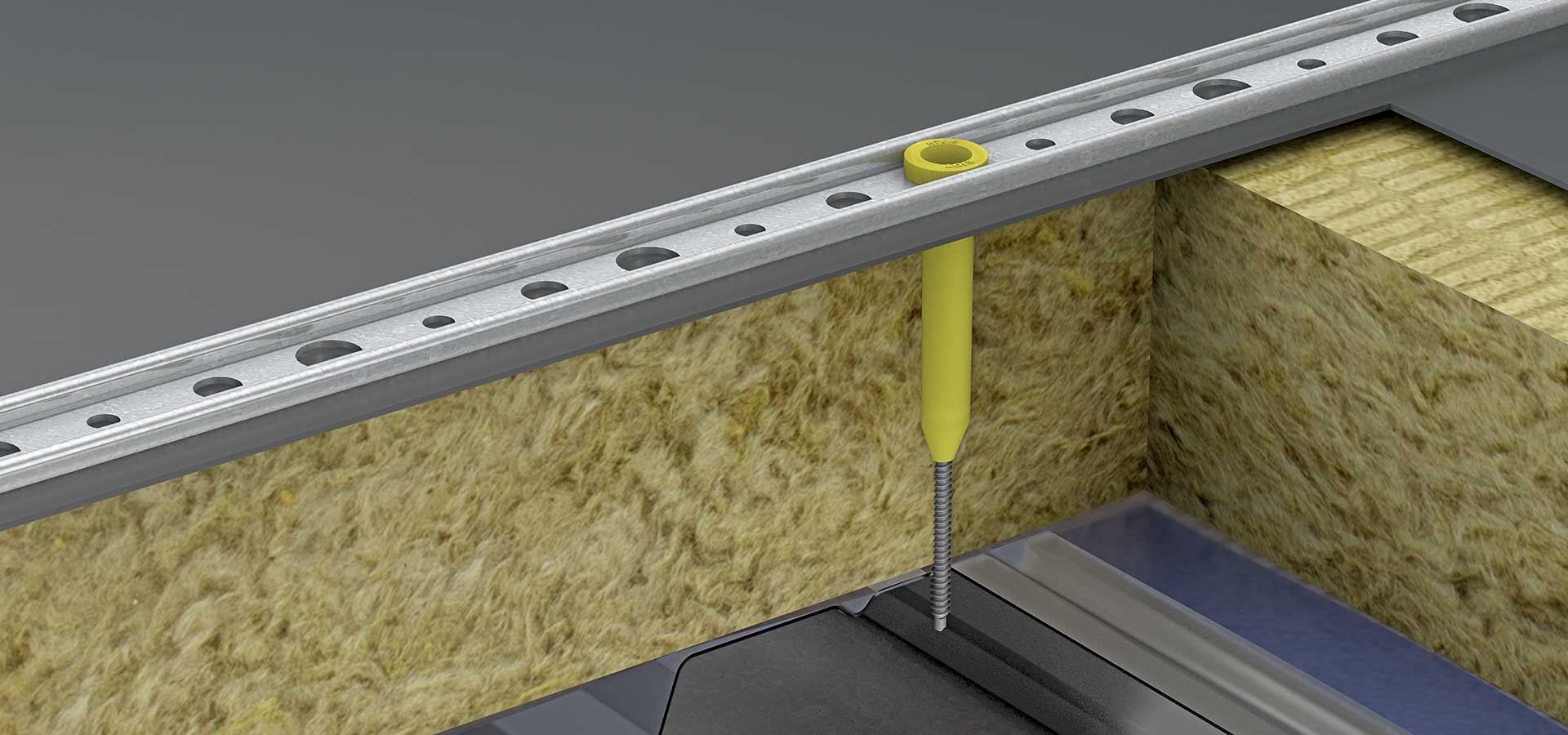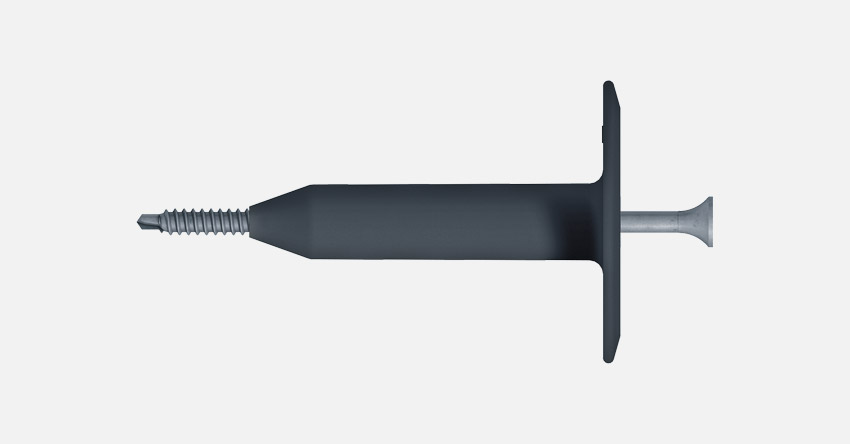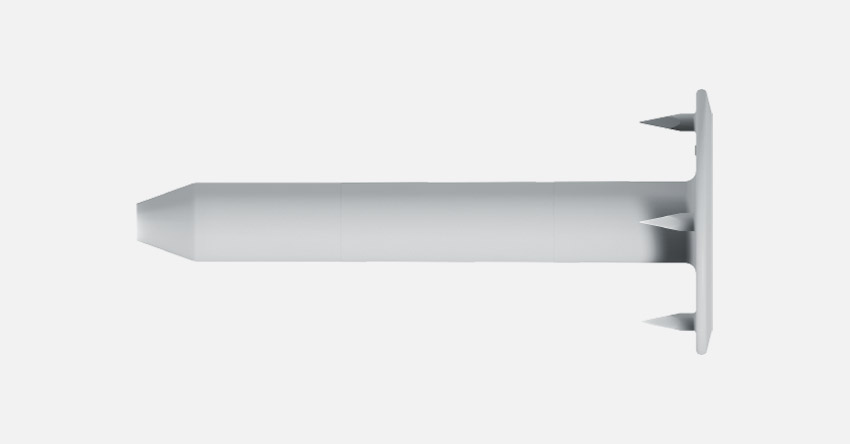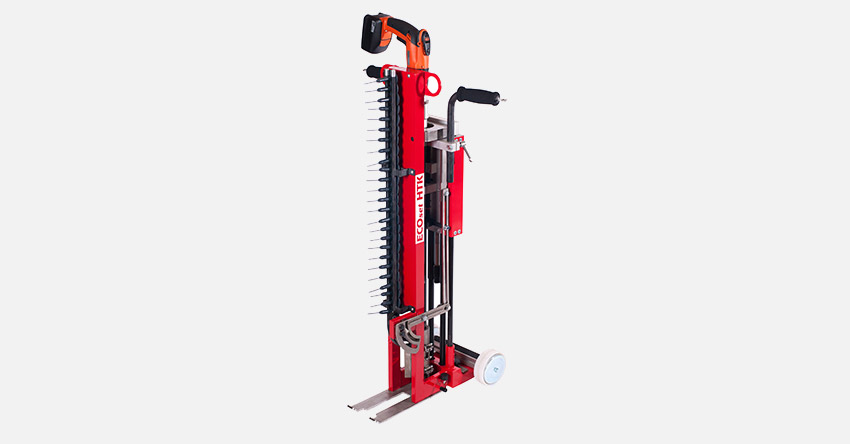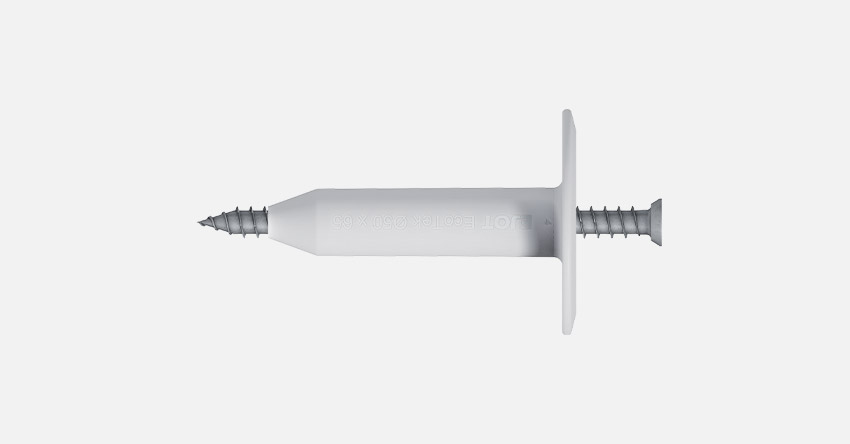Types of anchoring with roofing membranes
Flat Roof Guidebook – Part 2
The first part of our flat roof guide discussed the differences between pitched and flat roofs, the schematic structure of a flat roof and the occurring loads. This second part will address the different types of anchoring with roofing membranes.
Roofing membranes and the associated layers must be secured from becoming detached due to strong winds. This is set out in "Technical regulations for roofs with watertight sealing – Pitched roof guidelines". The specifications in DIN EN 1991-1-4:2010-12 "Actions on structures – General actions – Wind actions" must also be taken into account. There are three possible approaches to take when it comes to anchoring: loads, bonding, and mechanical fastening.
Roofing membranes and the associated layers must be secured from becoming detached due to strong winds. This is set out in "Technical regulations for roofs with watertight sealing – Pitched roof guidelines". The specifications in DIN EN 1991-1-4:2010-12 "Actions on structures – General actions – Wind actions" must also be taken into account. There are three possible approaches to take when it comes to anchoring: loads, bonding, and mechanical fastening.
Anchoring using loads
Gravel and roof greening are most commonly used for using loads to secure loosely attached roof membranes. In many cases, roof greening is already part of the development plan. The appearance of the roof surface can be improved by using various materials for this type of anchoring. The load material also protects the roofing membrane from UV rays. On the other hand, however, the structure of the building may be subjected to additional stress from this load. Another risk is that dust can settle between the applied material and the rainwater does not drain away over the years. In the event of a leak, it can be difficult to locate the source and normally only a complete refurbishment can fix the problem. Even applying the load material can cause issues: damage to the roof's waterproof layer may be caused due to the working equipment used and is not a rare occurrence.Anchoring using PU bonds
With anchoring using PU bonding, the biggest disadvantages are in the attachment of roofing membranes. A bonded system has no initial adhesion and must first be secured. When processing, there are many boundary conditions which are supposed to be met, but which in practice can rarely be met on building sites. These include the processing temperature, the right adhesion volume, the moisture content of the building material, and the surface properties of the load-carrying system. And the limited shelf life of the adhesive and the time-consuming proper disposal of empty adhesive containers mean an increased workload, too. In addition, the fact that every position has to be individually bonded means an enormous amount of additional effort for the contractor.The contractor must ensure they have comprehensive insurance in case any damage occurs. However, this is only possible if they document the assembly, which can be a big task. This means that all of the necessary basic conditions such as temperature, moisture content, adhesion volume and the surface properties have to be documented. In practice, this is hard to implement or not implemented at all. Consequently, the contractor almost always bears the risk in the event of damage. However, society's rising sustainability concerns present arguments against anchoring with bonding, because the removal, separation and disposal of bonded roof constructions is either impossible or is only possible with a great deal of effort.
Anchoring using bitumen bonds
Anchoring the roofing membrane with bonded bitumen membranes always carries a risk of fire. Special attention must be paid to fire protection and it is not always possible to use a burner to bond the bitumen roofing membrane at all building sites (e.g. at petrol stations). Additionally, each position must be individually bonded, as is the case with all other bonded roof constructions, and sometimes an additional prime coat is also necessary.Anchoring using mechanical fastenings
Anchoring with mechanical fastenings offers a lot of advantages over the systems we have already discussed. For example, there is no restriction on processing due to temperature, weather, surface properties or the building use. With regards to the fire load, the use of mechanical fastenings is permitted without certification according to DIN 18234, the so-called Industrial Directive, unlike with bonded structures. With mechanical fastening, the whole roof package is fastened in one work step and is therefore the most economical solution for the contractor when it comes to assembly time.The installation process for the mechanical fasteners can be done either with the aid of an installation tool or manually by hand, and offers a defined and comprehensible type of mounting. In the event of damage, providing evidence for it is extremely simple: if the contractor has installed the required number of fasteners according to the initial sizing, there is no fault on behalf of the contractor.
Should the roofing need to be dismantled, the clean separation of the individual layers for segregated and environmentally-friendly waste disposal is no problem either.
Seam fastening
The mechanical fastening of waterproof sheets is conventionally done in the form of a linear fastening. With this type of fastening, an individual fastener is installed, usually in the seam or the overlapping area of the roofing membrane. The fastening combination always consists of a stress plate and a fastener, which can differ depending on the substrate. The position of the stress plate is always at least one centimetre from the edge of the roofing membrane and is specified by the roof manufacturer. To seal the construction, the roofing membranes are welded together. The welded seam is four to five centimetres in size, meaning that the overlapping of the roofing membranes is due to the width of the sealing joint, the dimensions of the stress plate and the distance from the edge of the stress plates to the roofing membrane.Rail fixing
Another option for the mechanical fastening of roofing membranes is the use of a rail fixing. Here, a rail profile is attached to the welded and sealed roofing membrane, and is also covered with membrane strips for waterproofing. A big advantage is that the roofing membranes only require a low amount of overlap and the fastener gap between the attachments can be optimised, as it can be worked on independently of the trapezoidal profile roof seam grid.Advantages of mechanical fastening
The mechanical fastening of roofing membranes has numerous benefits. Laying the membranes loosely gives the sealing a certain flexibility and ability to move around. A planar separation between the seal and the substrate also remains in place. Movements and stress from the substrate are not carried over. The resulting vapour pressure is also balanced out across a flat plane, meaning there is no formation of bubbles due to moisture underneath the sealing layer. Because there is no load, mechanical fastening is also ideally suited to roofs with light bases such as wooden constructions or steel trapezoidal profiles. The fastening process is particularly quick and conserves resources because all layers of the sealing structure as well as the fastening of the edges can be completed in one work step. Loosely laying membranes is also advantageous if you choose to dismantle the roof membrane at a later date. If laid loosely, then dismantling the individual layers and recycling or disposing of them separately is easy to do.In the next part of our flat roof guide we will look pre-dimensioning. We will take a look at which influencing factors play a role and which parameters are required to create the initial sizing.

